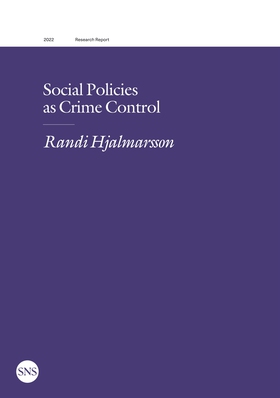
Lägg till önskelistan
Social Policies as Crime Control e-bok
Pris
45 kr
Policy makers around the world can reduce crime through two types of complementary polices criminal justice policies (e.g. police and sanctions) and social policies (e.g. education, labor market) that do not explicitly target crime. The latter are an often-overlooked policy response.
This report discusses the potential of seven non-criminal justice policy arenas education, alcohol, early childhood environment, healthcare, employment, welfare, and military conscription as crime control channe...
E-Bok
45 kr
Pris
Förlag
SNS Förlag
Utgiven
21 November 2022
Längd
116 sidor
Genrer
Samhälle Och Politik, Fackböcker
Språk
English
Format
epub
Kopieringsskydd
Vattenmärkt
ISBN
9789188637949
Policy makers around the world can reduce crime through two types of complementary polices criminal justice policies (e.g. police and sanctions) and social policies (e.g. education, labor market) that do not explicitly target crime. The latter are an often-overlooked policy response.
This report discusses the potential of seven non-criminal justice policy arenas education, alcohol, early childhood environment, healthcare, employment, welfare, and military conscription as crime control channels. For each policy arena, the report highlights both the theoretical mechanisms through which crime can be affected and the extent to which this theory is supported by empirical evidence.
Criminal justice populations are negatively selected in many dimensions, including worse childhood environments, and education, employment and health outcomes. Whether or not social policies targeting these factors can reduce crime depends on whether these factors actually cause crime or are simply correlated with criminal behavior. Careful attention is paid throughout the report to this distinction, and research that uses natural experiments and quasi-experimental research designs to convincingly disentangle correlation and causation is highlighted.




